The terms “resume” and “CV” are often used interchangeably and, while similar, they are two distinctly different documents.
It’s important to know the key differences and when it’s appropriate to submit which document to a potential employer.
What’s the difference between a resume and a CV?
Both a CV and a resume are designed to showcase who you are as an applicant and what you’ve accomplished so far in your career. In this article, we break down the exact differences between a CV vs a resume.
One key difference is length…
CV Length
- A CV (short for curriculum vitae) is a detailed document that’s normally 2-5 pages (or longer) that maps out your credentials, research, and publications.
- A Latin term that means “course of life,” it’s standard to send a CV for academic or higher-education positions, scientific research fields, and medical professions.
Resume Length
- A resume is a concise document – typically 1-3 pages long – that summarizes your skills, work experience, and professional accomplishments.
- In French, resume or résumé literally means “summary.” It’s your career (or at least the parts that relate to the job you’re applying for) in a nutshell.
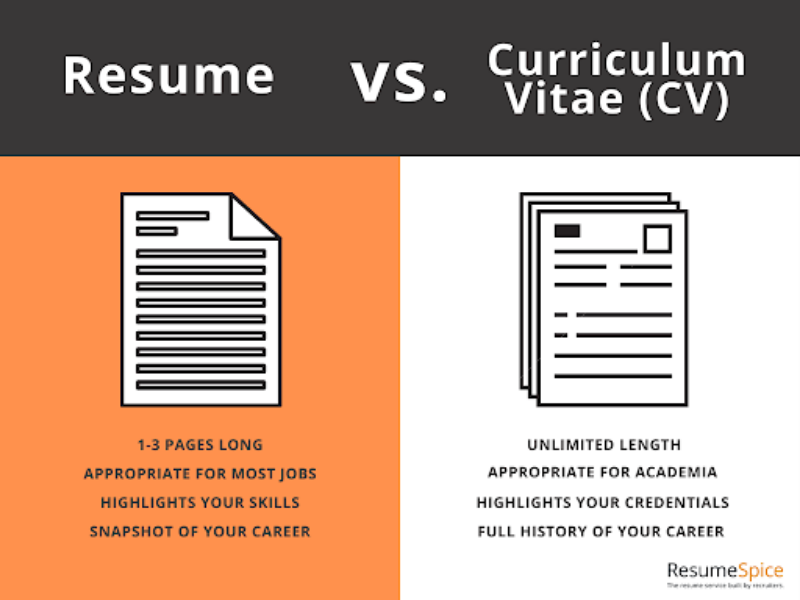
Let’s dig more into both a CV and resume.
What is a CV?
A CV is normally submitted for academic jobs and is a useful tool for screening committees to determine whether you have the proper credentials. As such, you should include a full history of your career related to your accomplishments, research, and education.
When it comes to length, a 2-3 page CV is appropriate for recent graduates, but if you have years of experience, it might be longer. There are typically no length limits.
Here’s the information typically included on a CV:
- Name
- Contact information
- Education
- Skills
- Experience
- Certifications
- Languages
- Associations
- Publications
- Awards
- Extra Training and Courses
- Conferences
Similar to a resume, a CV should read from most relevant to least relevant information. Check out the following example of a CV:
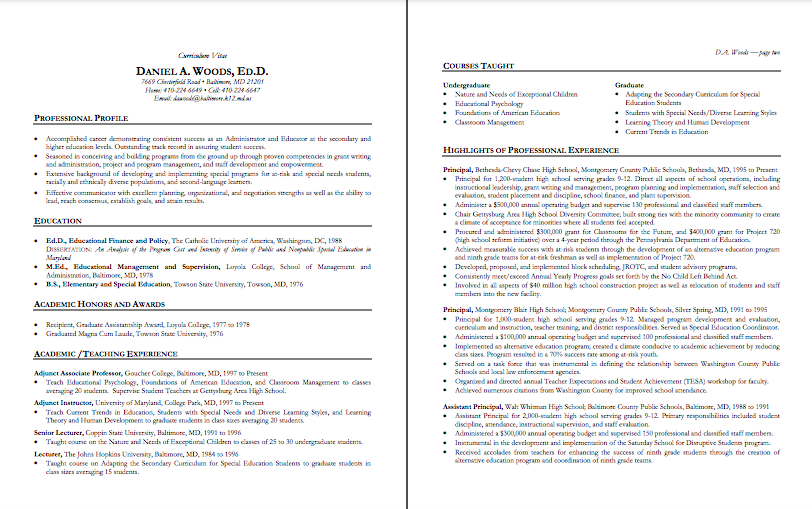
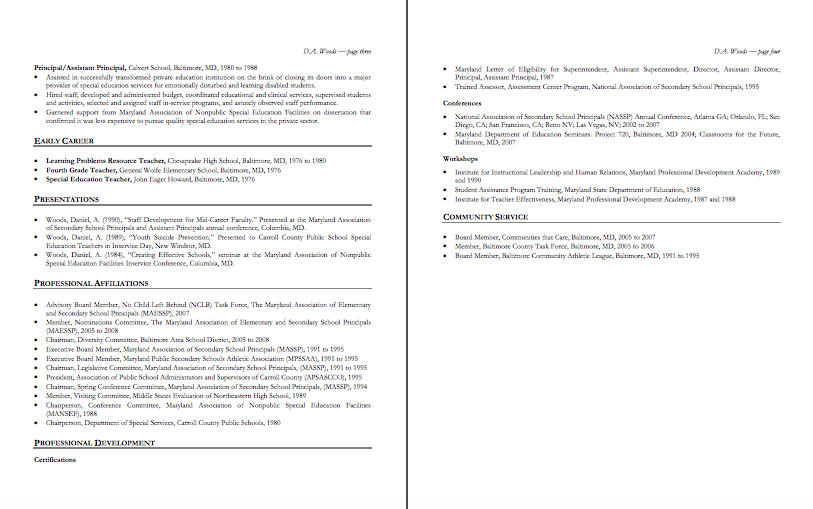
Notice how research experience, fellowship fundings, and honors and awards are at the top of the document, pointing to the applicant’s academic experience.
Use a CV if you’re seeking grants, postdoctoral positions, fellowships, or teaching/research positions at higher education institutions.
What is a resume?
A resume is submitted for most types of professional jobs in the U.S. It’s a concise document that lets recruiters and hiring managers view your past experience and current skills.
Unlike a CV, a resume is generally expected to be 1-3 pages long. Recruiters want a snapshot of who you are professionally and the most relevant information for the job to which you’re applying.
Here are the five most important sections you should include on your resume (and the recommended order of the sections):
- Contact Info
- Title and Branding Statement
- Experience
- Education
- Skills
Check out the following example of a one page, early career resume:
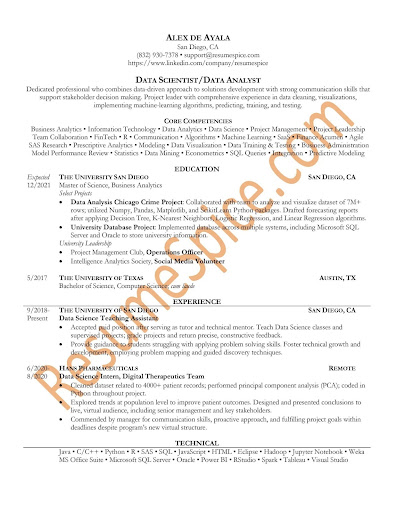
Unlike a CV, a resume is very skill-based and should display proof of your skills within your “Experience” section. For example, if you want to demonstrate to a sales company that you have excellent management skills, you might share that you “Led a team of 10 sales reps to close $800K in deals in Q3, surpassing quota by 35%.”
To increase your chances of an interview, ensure that your resume is ATS friendly and personalized.
What are the international differences between a CV and a Resume and when should I use which document?
Determining whether to create a resume or CV gets a bit sticky if you’re applying for an international position. Unlike a U.S. CV that details your academic career, an international CV looks much more like a North American resume with a focus on skills and experience.
Europe, Asia, Africa, and the Middle East typically require an international CV. These types of curriculum vitae can include more personal info than a U.S. resume (e.g. attached photograph, date of birth, nationality, marital status), but are structured similarly.
Here’s an example of an international CV:
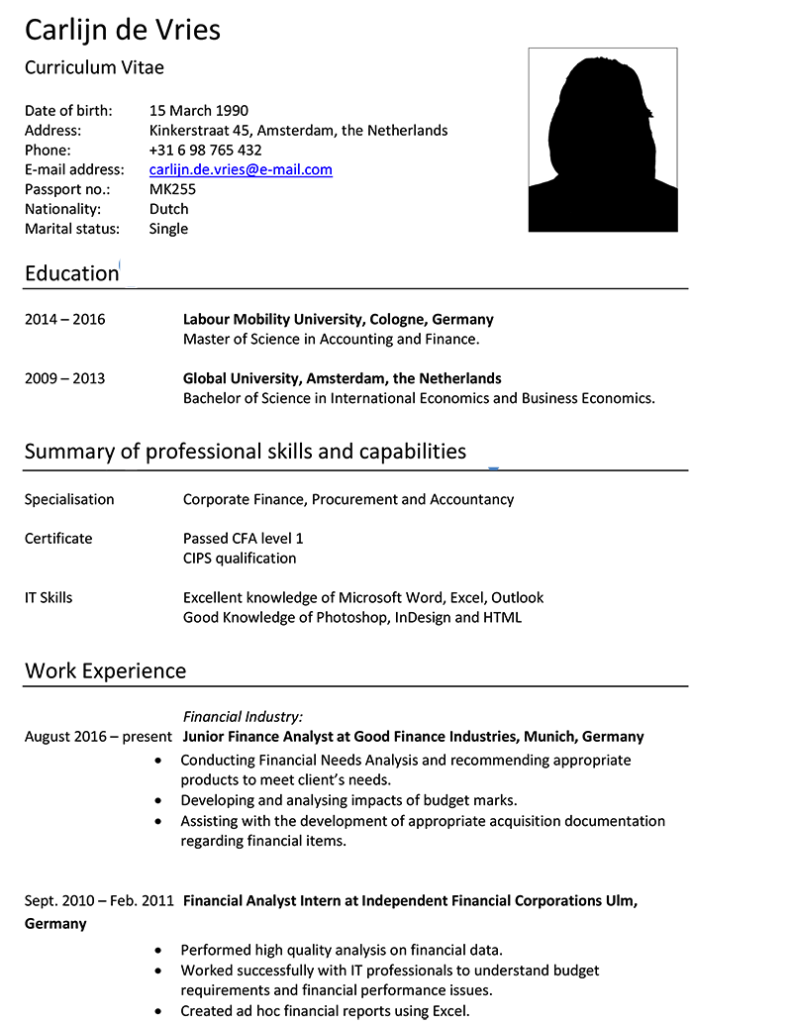
Just remember that, when applying for an international position, you will likely submit a CV that looks very much like a U.S. resume.
Submit a CV for academic/research/medical jobs. Submit a resume for all other positions.
As a good rule of thumb, use a CV to apply to academic/research/medical jobs and a resume to apply to all other types of positions. Create a CV similar to a U.S. resume to apply to international jobs.
And if a U.S. job description that is non-academic or non-scientific specifically asks for a CV, simply ask the hiring manager or recruiter about what document they’re looking for. It never hurts to check when in doubt.
Interested in expert resume help?
For even more guidance on creating an effective resume, check out our professional resume services here at ResumeSpice. We’d love to work with you to develop a resume that gets you noticed by top companies. You can reach us by phone at 832.930.7378 or contact us online. We’d love to work with you!






